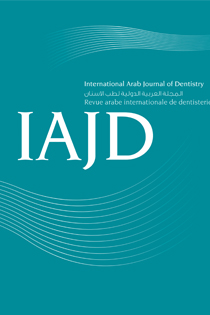Abstract
The aim of this in vitro study was to evaluate the effect of two polishing procedures on color stability of nanocomposites immersed in three mouth rinses. One hundred twenty disc-shaped specimens (10x2mm) of nanocomposite Filtek™ Z350 XT, shade A3, were prepared. Specimens were distributed into 3 groups of 40 discs each: Group 1) Filtek™ Supreme XTE without polishing; group 2) Filtek™ Supreme XTE + Sof-Lex™ pop-on discs and group 3) Filtek™ Supreme XTE + PoGo® polishers. Initial color values were evaluated using the CIELAB scale. The discs in each group were randomly divided into 4 subgroups (n=10). Each subgroup was immersed in 20ml of mouth rinse for 12 hours, then removed and submerged in deionized water. Color values were remeasured. The results didn’t show any statistical significant difference between polished and unpolished samples whether immersed in artificial saliva or in Listerine®. For the specimens immersed in Cool Mint® Listerine® or in Enziclore, a statistically significant difference was observed between polished and unpolished specimens (p < 0.05). Samples polished with Sof-Lex™ discs showed lower color alteration than samples polished with PoGo® polishers. Cool Mint® Listerine® (alcohol containing-mouthwash) and Enziclore (chlorhexidine-containing mouthwash) showed the highest value of discoloration but these differences were not visually perceptible.

